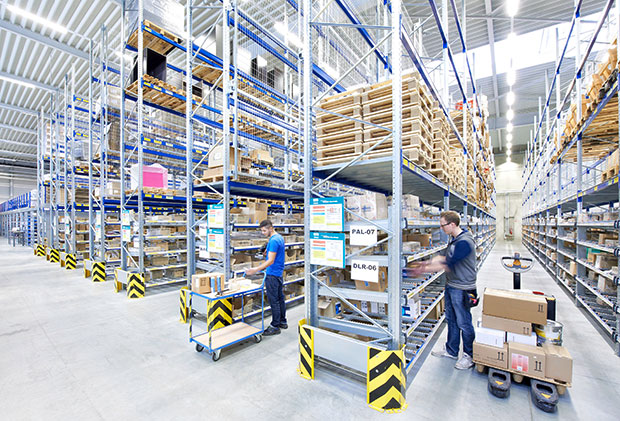Retailers can win new customers by adopting the right storage and order picking technology to support their e-commerce and fulfilment operations, says Edward Hutchison, Managing Director of BITO Storage Systems.

The warehouse, or fulfilment operation, is central to an e-commerce retailer’s drive to ensure complete customer satisfaction. Having a high density storage and order picking system within it, one that offers a large number of pick spaces for a broad range of SKUs, will be crucial for achieving highly accurate order picking that also generates cost savings by improving productivity.
Many fulfilment operations also serve other retail channels in addition to e-commerce from a single pool of stock, managed by sophisticated warehouse systems. The physical storage complexities in combining the differing needs of these channels in terms of speeds and order quantities can lead to a great deal of specialty around picking operations. A facility will need to accommodate picking pallet and caseloads in addition to large numbers of single items – some of which may go direct to a customer’s home, others going to a retail store’s ‘click and collect’ desk.
For online orders, hit rates at pick slots are much slower and often there can be a lot of travel involved in picking that order, adding cost. As the online retailer’s SKU range diversifies then a wider range of locations will be required adding to the travel times.
Flexible picking systems must be able to scale to accommodate large variances in volumes, SKU range and profile – not only for fulfilment of online orders but, in many cases, handling the returns also.
Going live
A combination of ‘middle-ground mechanisation’, such as carton and pallet live storage systems, and intelligent software can provide a cost effective answer. Live storage, which essentially replaces solid shelves with rollers, is growing in popularity as a solution for fulfilment operations because it offers a cost-effective high-density alternative to automated storage.
Live storage allows pickers to drastically reduce travel times because it places more pick faces in a given area, when compared with conventional shelving, because the replenishment stock is located in flow lanes behind in the pick face, rather than above or beside it. This speeds picking to contribute to a reduction in delivery times, which is a key tool for winning customers.
The flow lanes are easily replenished from the aisle behind, enabling constant availability of goods for picking at the front. When an empty carton or pallet is removed from the pick face a new one flows down the lane to replace it. Live systems operate on a FIFO (First in, First out) basis, so the picker is taking the product with the nearest best-before date, which is essential for the grocery sector, which represents high-turnover online retail.
Live storage can be further enhanced for more efficient picking with lower-cost automation solutions such as pick-to-light and pick-to-voice systems. Using internal transport systems, like BITO’s LEO, will enable the repurposing of people involved in moving orders around the pick faces and warehouse to more productive functions, such as picking the orders.
Considerable space savings can be generated when both containers and racking are correctly designed. A ‘one stop shop’ supplier able to provide the bins and containers compatible with the racking and shelving will make it easier to achieve the maximum density of stock.
All of these factors combine to make a positive impact on the bottom line and, as a result, investment in live storage will be returned more quickly than other high density storage and picking systems such as automation. In addition, the retailer gains a fulfilment operation that supports high customer service levels, giving the competitive edge required to win new customers.
For more information, visit bito.com.




Comments are closed.